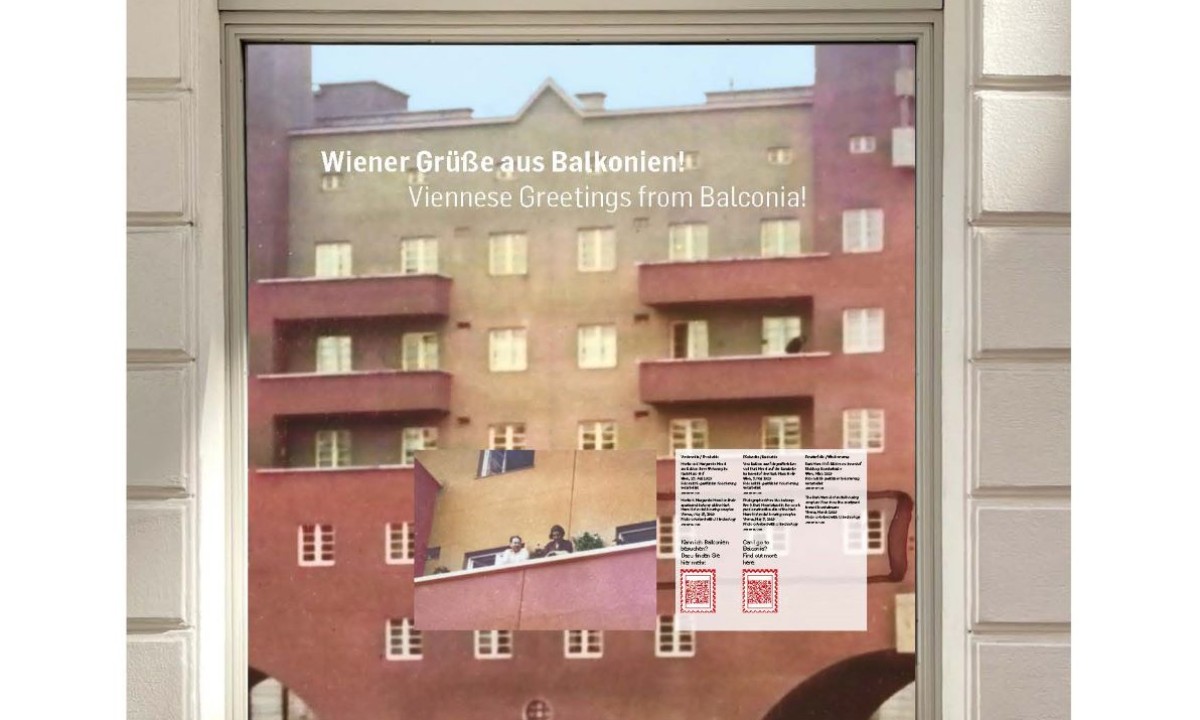Summertime is synonymous with vacation time! The Mezei family of Vienna loved to travel. They documented their trips in an album titled “Gemeinsam Erlebtes, gemeinsam Erschautes” (Shared Experiences, Shared Travels”), in which they pasted postcards and photographs of the landmarks they had seen and the hotels in which they stayed.
30. June 2025
Expo Window
Viennese Greetings from Balconia!
by Ekaterina Bebikh & Caitlin Gura
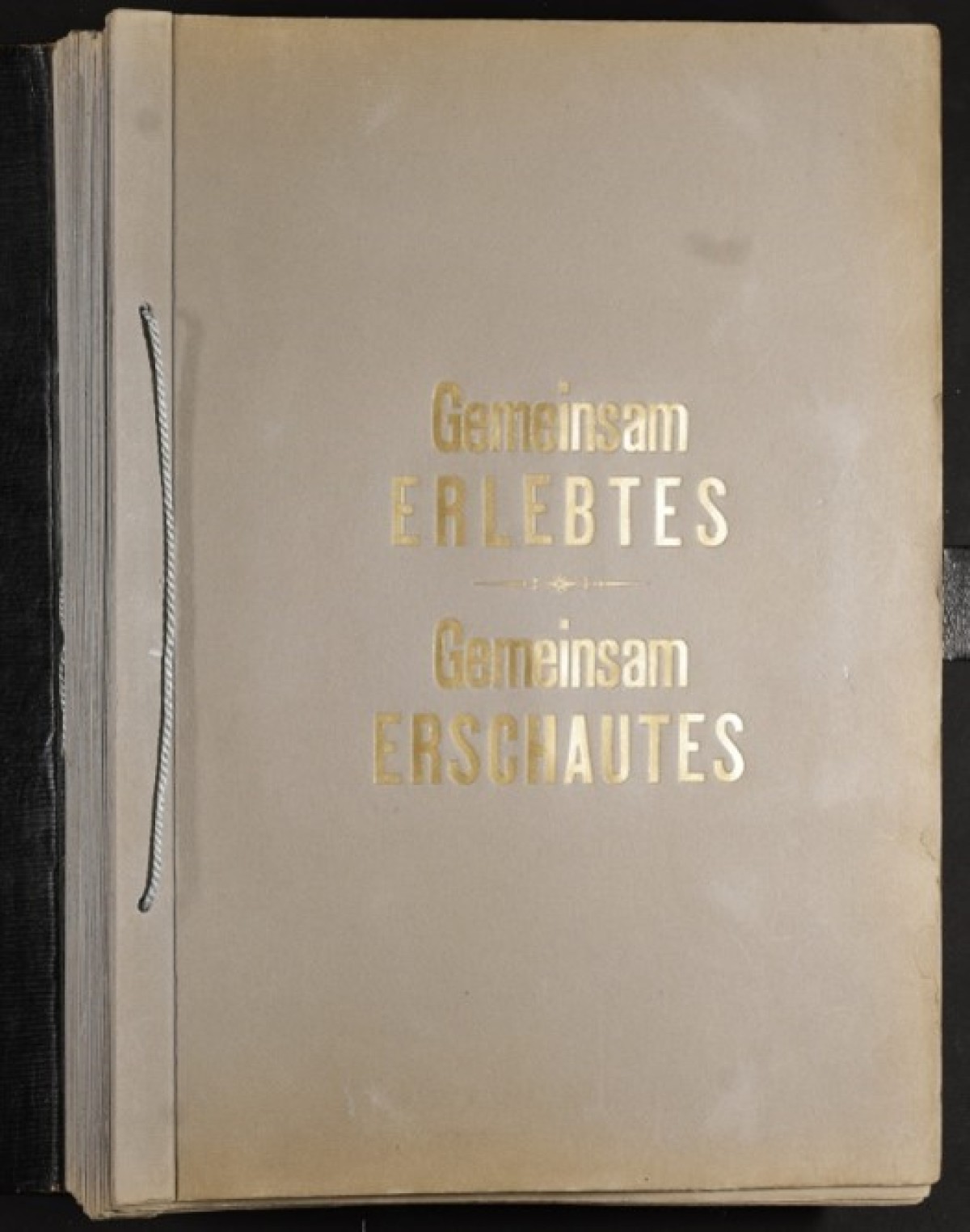
© Jüdisches Museum Wien
Photo album of the Mezei Family (1923-1938)
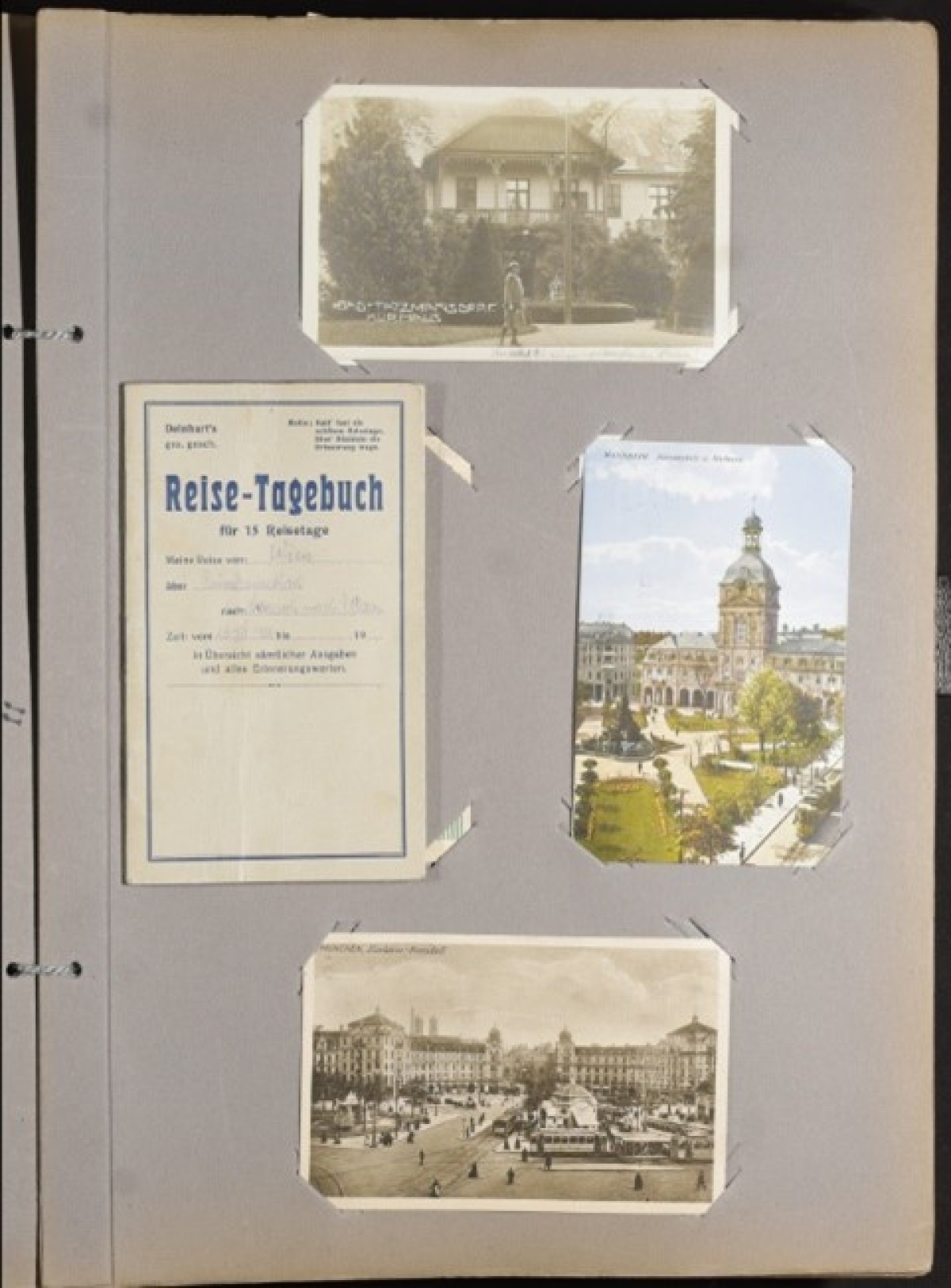
© Jüdisches Museum Wien
Curiously placed amongst the travel photos are also pictures of the Mezei’s balcony at their apartment in the Karl-Marx-Hof social housing complex in Vienna’s 19th district, Döbling. These photos show the Mezeis in Balkonien. Literally translated as “Balconia”, it is a colloquial term for stay-cations, spending the summer from the comforts of home from your own balcony. In the 1920s, balconies were a luxury. The social housing projects of Red Vienna (a term referring to the social-democratically run municipal government) made this luxury available to all.
Meet the Mezeis
The Mezei family’s story began on July 29, 1923, with the wedding of Moritz (Maurus) Mezei and Margarete Neufeld at the Stadttempel (City Temple)1 - today the only synagogue in Vienna that survived the Nazi era.
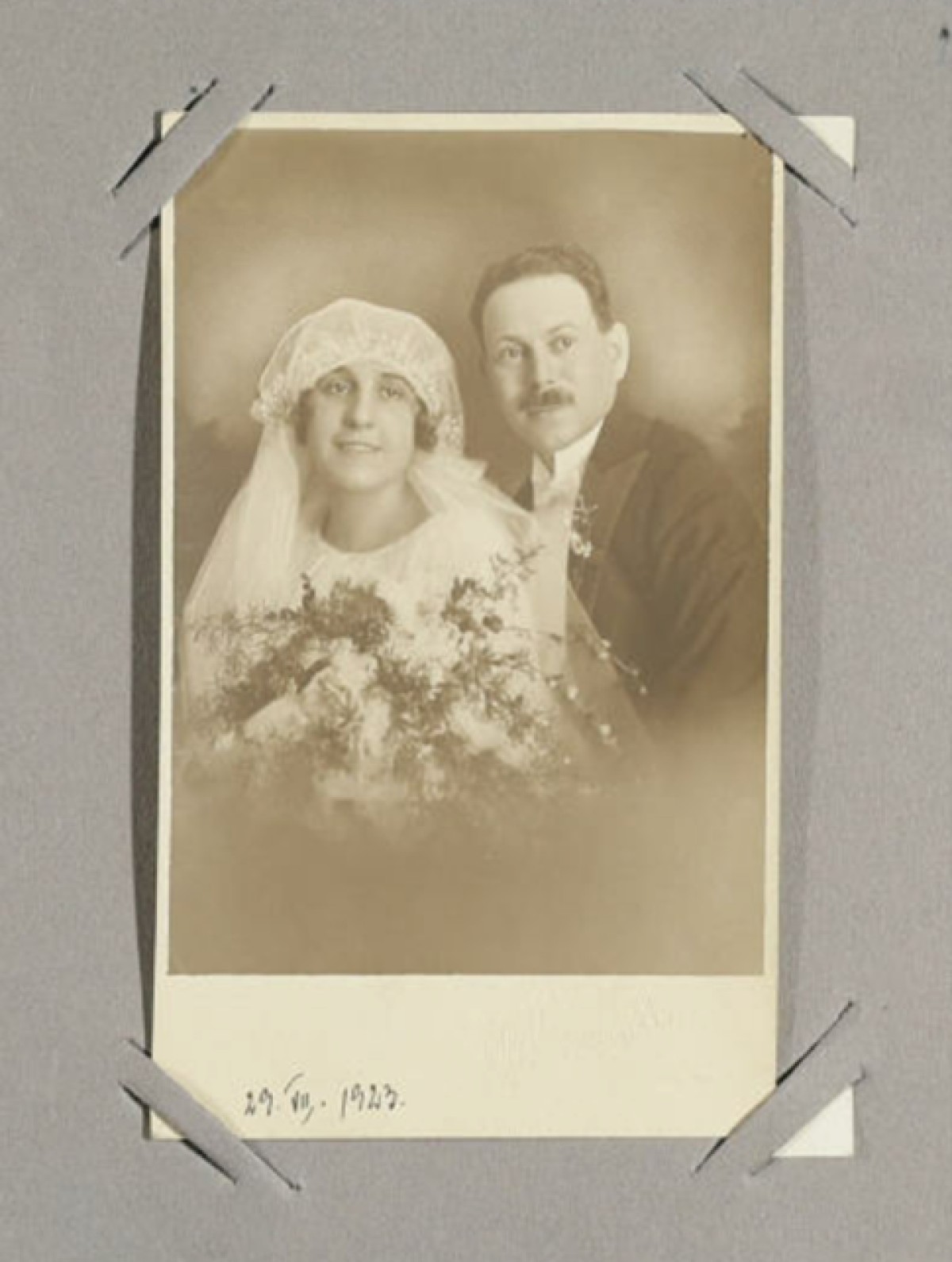
© Jüdisches Museum Wien
Wedding Photo of Moritz and Margarete Mezei, July 29, 1923
Moritz Mezei was born in 1886 in Steinbrunn, then part of Hungary (now in Burgenland, Austria). He worked as a journalist, writer, and translator of Hungarian. A committed member of the Social Democratic Workers' Party, he contributed to its newspapers and remained politically active even after the party was banned in 1934, continuing his efforts underground until 1938. Margarete Mezei (née Neufeld, born in Vienna in 1899) worked as the head of the shipping department at a Viennese chemical company before her marriage. In the 1920s and 1930s, she was active as a journalist and translator, sometimes working together with her husband.2 The couple had twins, Ilse and Kurt, born on May 13, 1924.
The Karl-Marx-Hof Social Housing Complex
In 1929, the family moved into Karl-Marx-Hof, one of the most iconic Gemeindebauten - social housing complexe- of Red Vienna. Built between 1927 and 1930 in the bourgeois 19th district of Döbling, it was designed by Karl Ehn, a student of Otto Wagner. It was a part of a visionary municipal housing program initiated by the Social Democratic city government aimed to address the severe housing crisis in Vienna that especially worsened following World War I, where there was rampant overcrowding and people living in unsanitary conditions without access to basic amenities.3
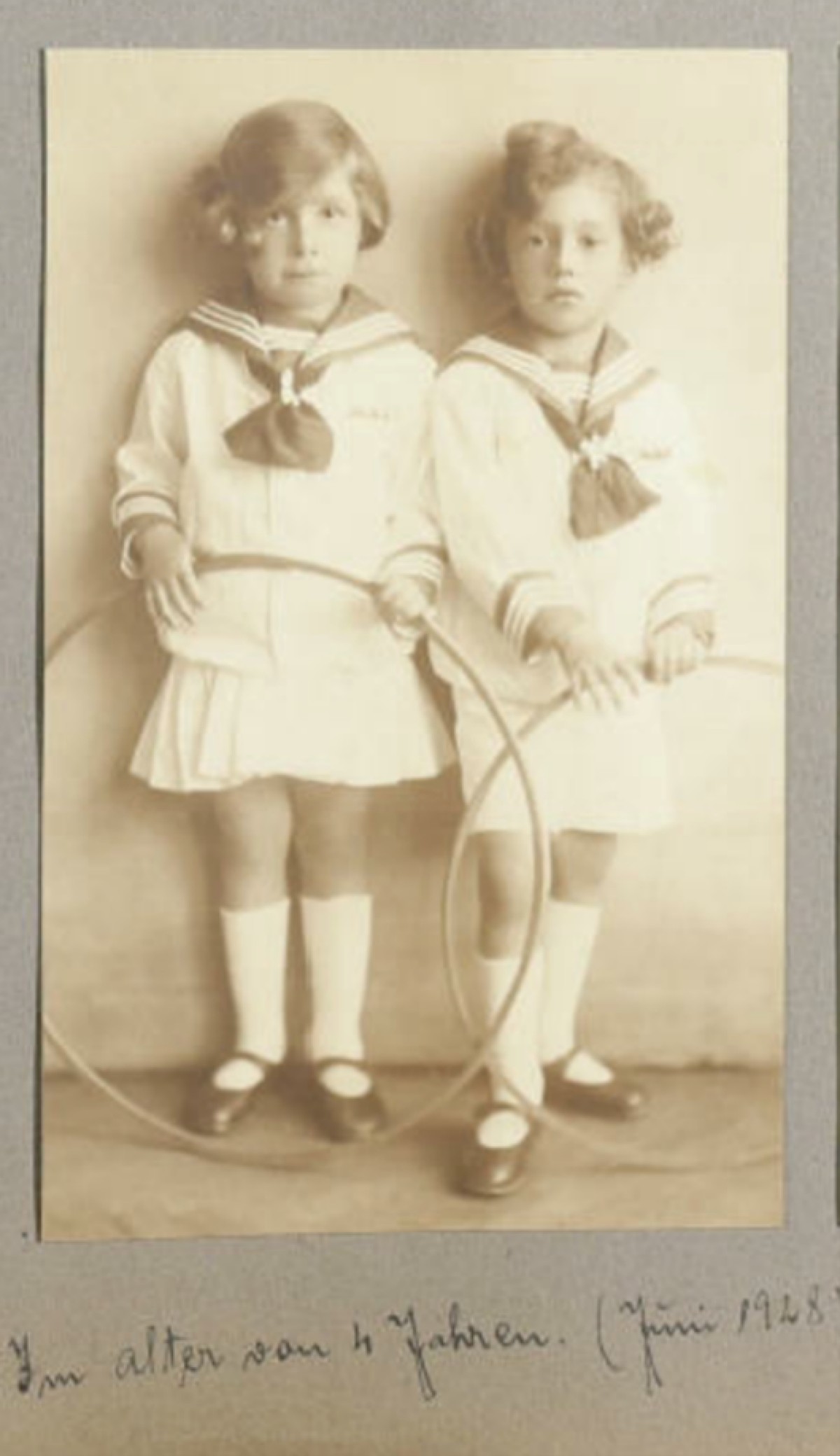
© Jüdisches Museum Wien
Ilse and Kurt at the age of four, June 1928
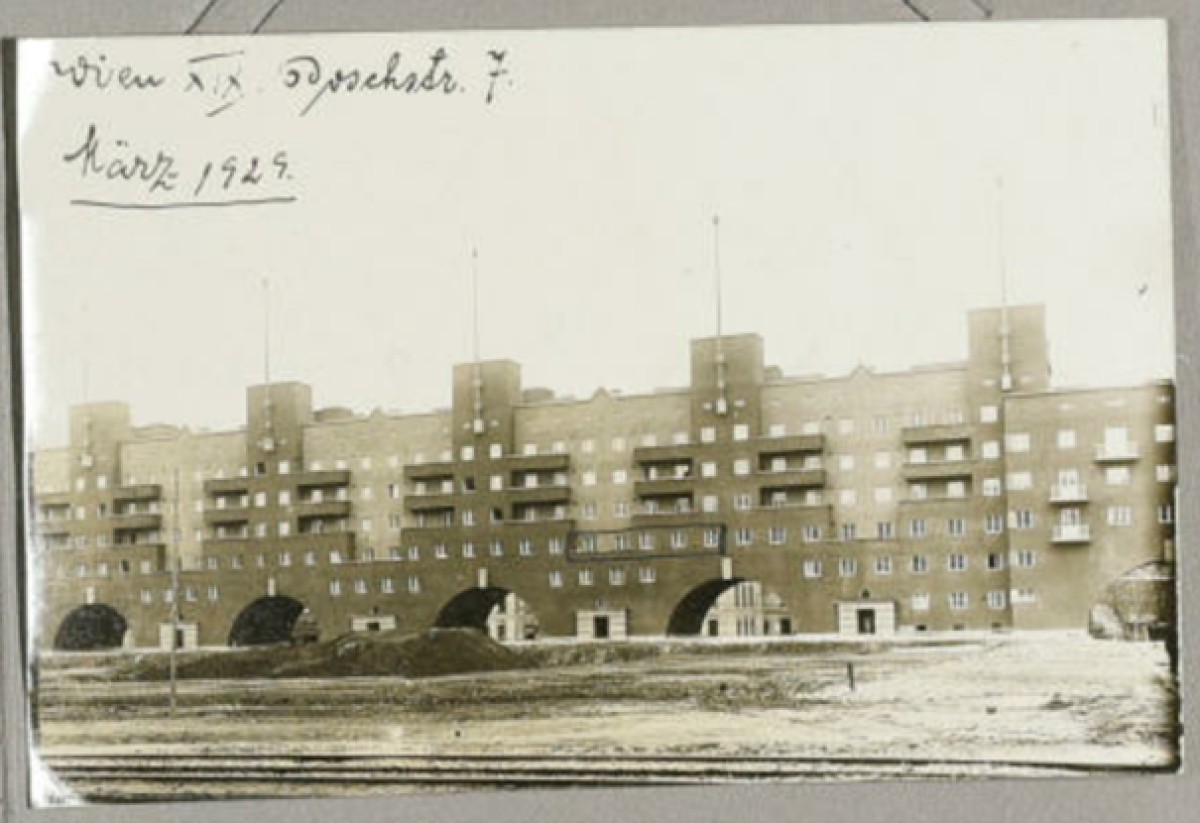
© Jüdisches Museum Wien
Photograph of the Karl-Marx-Hof taken from the courtyard facing Boschstrasse, March 1929. In this photo, you can see a set of windows and a balcony circled in black, marking the Mezeis apartment.
At 1,100 meters long, the Karl-Marx-Hof remains the longest continuous residential building in the world. Of its 156,000 m², only 18.5% was used for housing. The rest was devoted to courtyards, gardens, and playgrounds. It originally housed 1,382 apartments, each 30–60 m² in size, designed for about 5,000 residents. More than just housing, the complex embodied the Social Democratic vision of a “total living environment.” It included laundromats, public baths, kindergartens, a library, medical clinics, a pharmacy, shops, and communal spaces.4 Every apartment had a private toilet and cold running water - amenities that were considered luxuries at the time, especially in low-income private apartment buildings, which had until then relied on shared facilities.5 Balconies, once seen as a privilege of the wealthy, were included as a symbol of dignity and equality.6
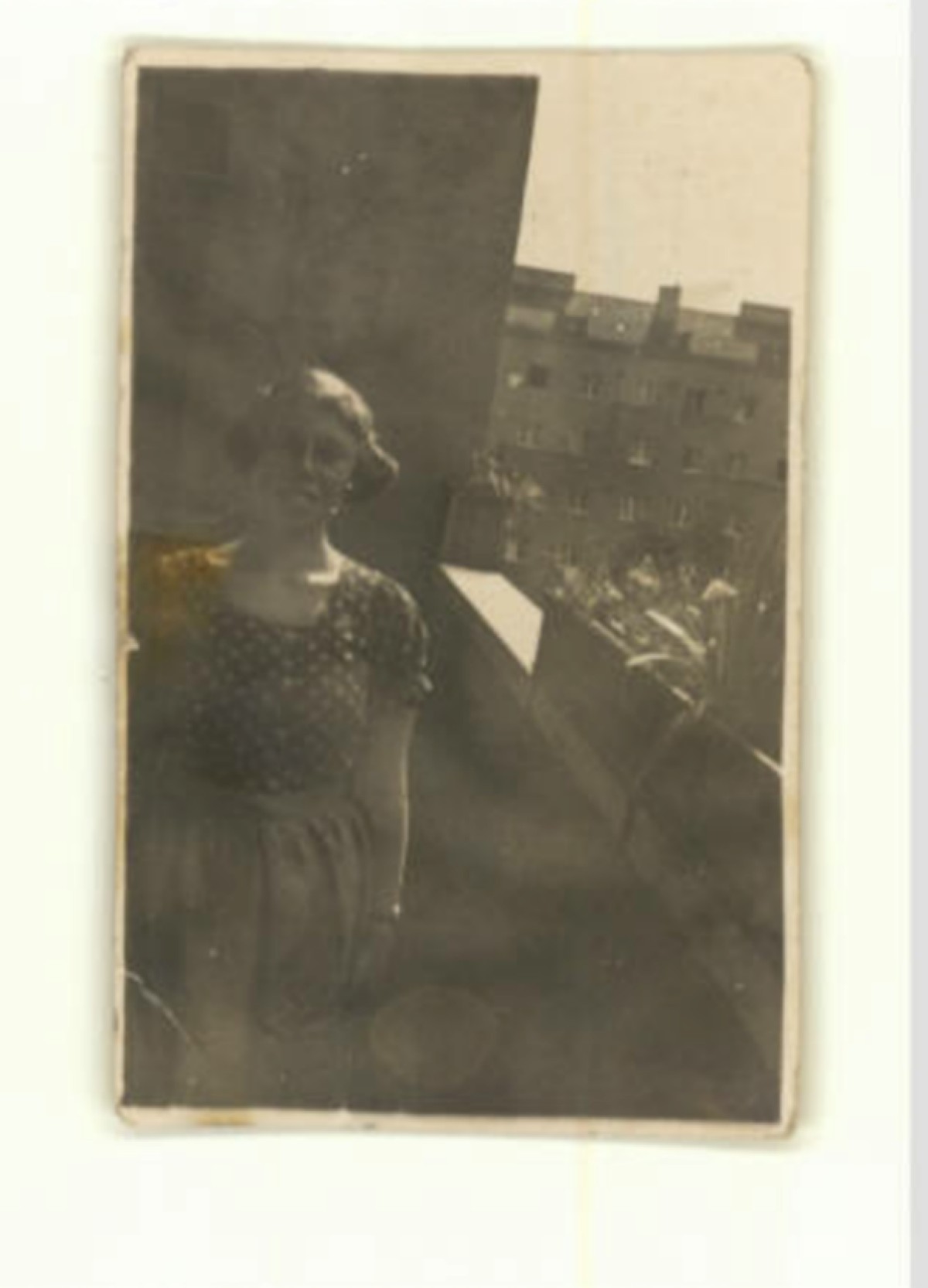
© Jüdisches Museum Wien
Ilse Mezei on the balcony, c. 1935
The Karl-Marx-Hof as a Political Target
In February 1934, during the four-day-long Austrian Civil War, the Karl-Marx-Hof became a focal point of resistance against rising fascism. Armed Social Democrats barricaded themselves inside, turning the building into a stronghold. The Austrian army, police, and the right-wing Heimwehr responded by shelling the complex with light artillery, despite the presence of unarmed residents. The insurgents were forced to surrender.7 In July 1935, the housing complex was renamed to “Heiligenstädter Hof.” Only until after the end of World War II did the building return to its original name.
Following the Anschluss of Austria to Nazi-Germany in 1938, Jewish residents and known Social Democrats, including the Mezei family, of the Karl-Marx-Hof were especially targeted. Starting that year, “non-Aryan” tenants were evicted from public housing. Among the sixty-six residents affected were the Mezeis.
Moritz Mezei was tragically killed in Auschwitz in 1944. His twins, Ilse and Kurt, died in 1945 shortly before Vienna's liberation by the Red Army. Margarete was the sole survivor of the family.8 Upon Margarete’s death in 1993, the Mezei family archive became part of the Jewish Museum Vienna’s collections.
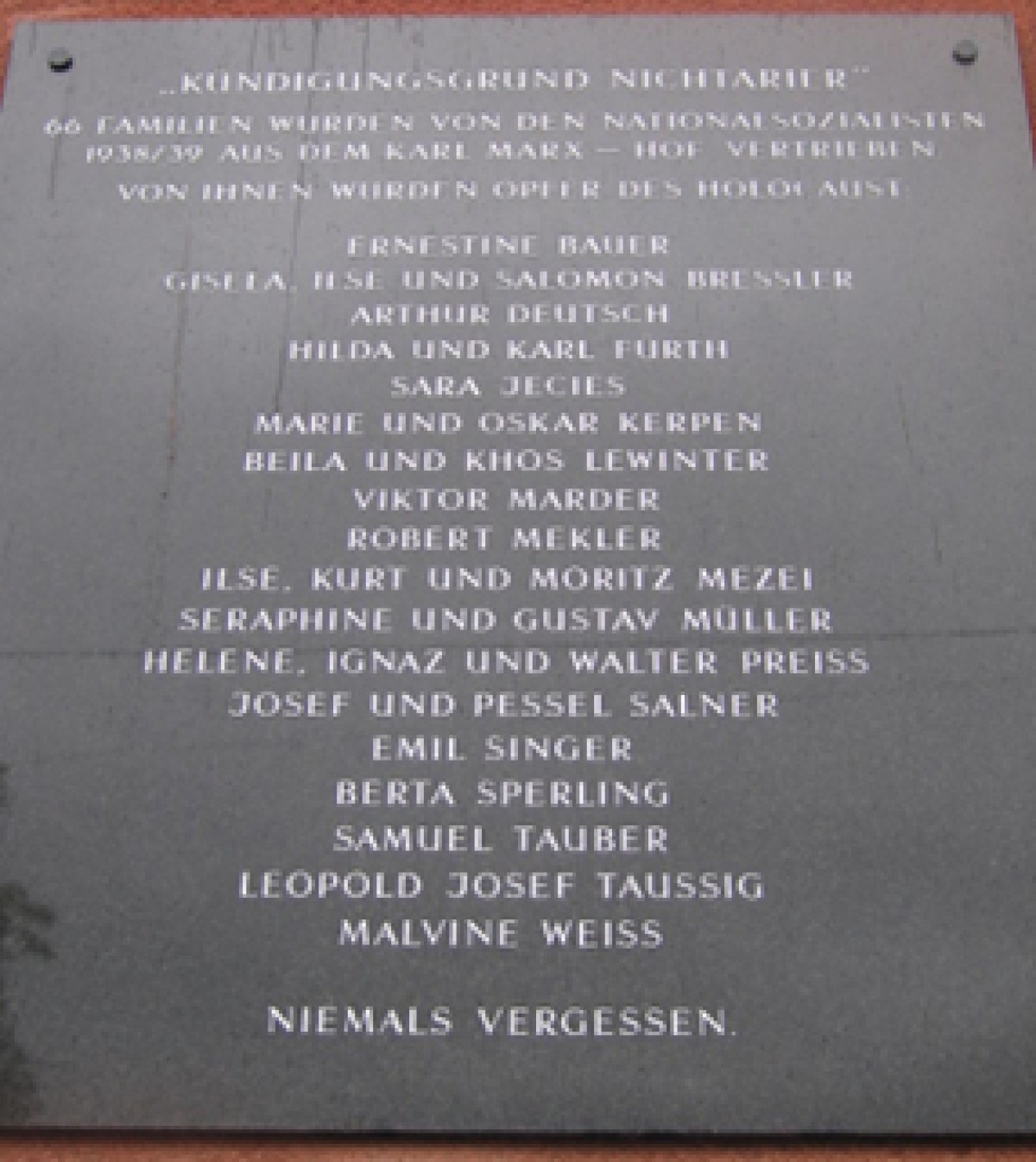
© BY.NC-ND 4.0
On November 27, 2003, the City of Vienna together with the Cultural Association of Austrian Roma unveiled this plaque commemorating the evicted residents from the Karl-Marx-Hof due to the racist laws of Nazi government was installed. The names listed acknowledge the former residents murdered in the Holocaust.
While the history of the Karl-Marx-Hof is marred by the political and racial persecution that took place there, it remains a global symbol of social innovation. Designing each apartment with direct access to light and fresh air improved quality of life for everyone of all classes. Today, balconies are now standard features of modern apartment buildings. Within the cityscape, residents transform them into little green oases with flowers, small trees, creeping vines, and raised beds – proving you do not have to travel far to find rest and relaxation. Welcome to Balconia!
1 Bernhard Ozlsberger, “Mezei – Geschichte(N) Aus Steinbrunn,” Geschichte(N) Aus Steinbrunn, July 18, 2017, https://steinbrunngeschichte.com/tag/mezei/.
2 Dieter J. Hecht, “Jüdische Jugendliche Während Der Shoah in Wien Der Freundeskreis Von Ilse Und Kurt Mezei,” in Oldenbourg Wissenschaftsverlag eBooks, 2013, 99–116, https://doi.org/10.1524/9783486735673.99.
3 “The Karl Marx-Hof, Vienna,” Vienna Direct, n.d., https://www.viennadirect.com/sights/marx.php.
4 Wikipedia contributors, “Karl-Marx-Hof,” Wikipedia, June 7, 2025, https://en.wikipedia.org/wiki/Karl-Marx-Hof.
5 Stadt Wien/Wiener Wohnen, „Geschichte des Wiener Gemeindebaus“, June 26, 2025, Geschichte des Wiener Gemeindebaus - Wiener Wohnen - Gemeindewohnungen.
6 Brenda Fowler, “History and a Name in a Vienna Project,” The New York Times, July 11, 1991, https://www.nytimes.com/1991/07/11/garden/history-and-a-name-in-a-vienna-project.html.
7 Michael Goldrei, “11 Reasons Why Karl Marx-Hof Is One of the Most Interesting Buildings in the World,” Vienna Würstelstand, November 13, 2019, https://viennawurstelstand.com/photo/11-reasons-why-karl-marx-hof-is-one-of-the-most-interesting-buildings-in-the-world/.
8 Hecht, “Jüdische Jugendliche Während Der Shoah in Wien Der Freundeskreis Von Ilse Und Kurt Mezei.”
2 Dieter J. Hecht, “Jüdische Jugendliche Während Der Shoah in Wien Der Freundeskreis Von Ilse Und Kurt Mezei,” in Oldenbourg Wissenschaftsverlag eBooks, 2013, 99–116, https://doi.org/10.1524/9783486735673.99.
3 “The Karl Marx-Hof, Vienna,” Vienna Direct, n.d., https://www.viennadirect.com/sights/marx.php.
4 Wikipedia contributors, “Karl-Marx-Hof,” Wikipedia, June 7, 2025, https://en.wikipedia.org/wiki/Karl-Marx-Hof.
5 Stadt Wien/Wiener Wohnen, „Geschichte des Wiener Gemeindebaus“, June 26, 2025, Geschichte des Wiener Gemeindebaus - Wiener Wohnen - Gemeindewohnungen.
6 Brenda Fowler, “History and a Name in a Vienna Project,” The New York Times, July 11, 1991, https://www.nytimes.com/1991/07/11/garden/history-and-a-name-in-a-vienna-project.html.
7 Michael Goldrei, “11 Reasons Why Karl Marx-Hof Is One of the Most Interesting Buildings in the World,” Vienna Würstelstand, November 13, 2019, https://viennawurstelstand.com/photo/11-reasons-why-karl-marx-hof-is-one-of-the-most-interesting-buildings-in-the-world/.
8 Hecht, “Jüdische Jugendliche Während Der Shoah in Wien Der Freundeskreis Von Ilse Und Kurt Mezei.”
